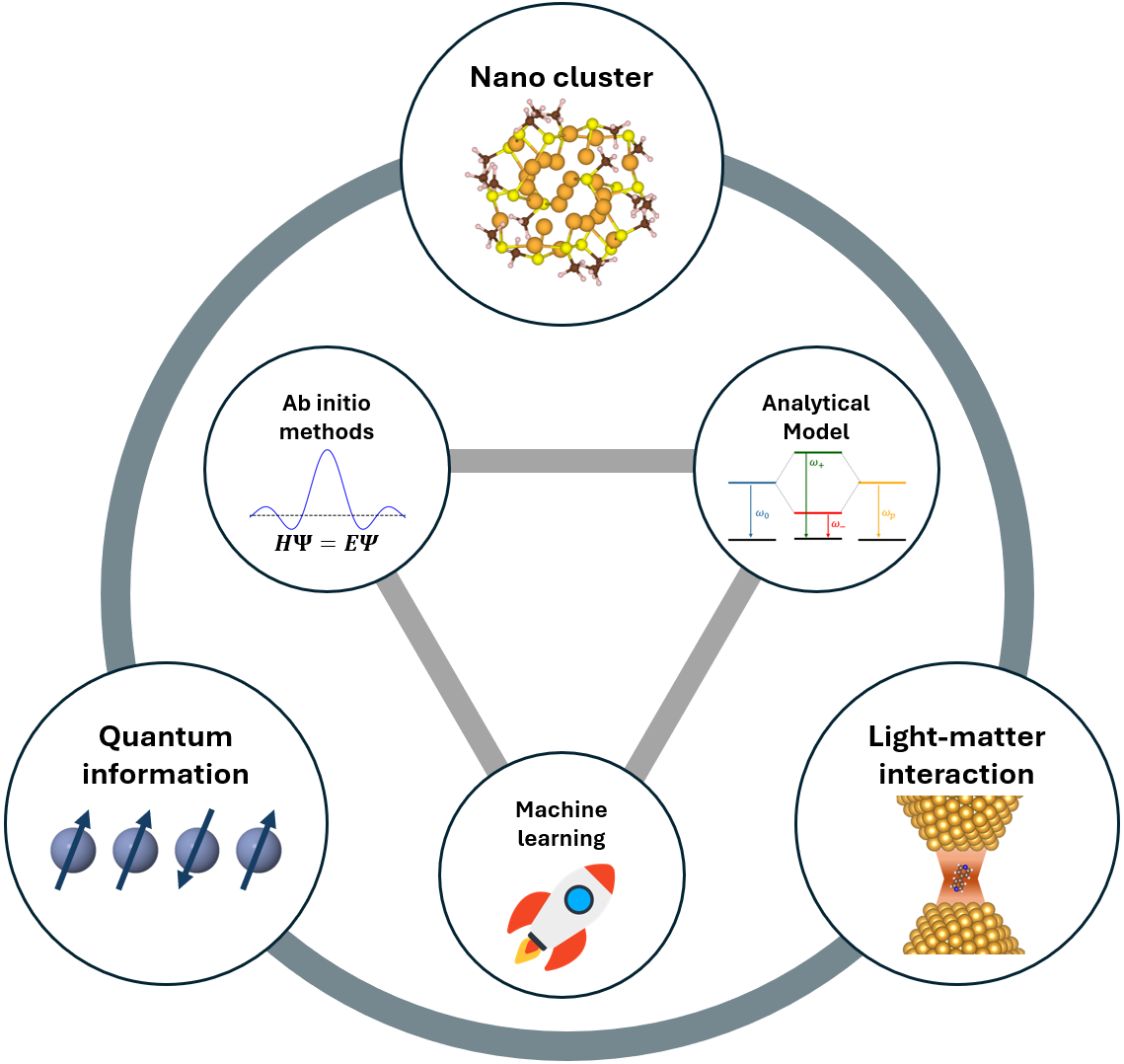Research
My past, ongoing, and future research
My past and ongoing research highlights the synergistic potential of an interdisciplinary approach at the intersection of physics and chemistry. During my PhD study and post-doc career, I focused on the computational investigation of metal nanoclusters and complexes, with particular interest in how these systems interact with external fields such as light or voltage. I employed a range of methods, including analytical simplified models, electronic structure calculations—such as density functional theory (DFT) and time-dependent density functional theory (TDDFT)—and molecular dynamics simulations to explore their structural, optical, and catalytic properties. Besides, motivated by collaborations with experimental groups, I trained machine learning-based force fields for gold nanoclusters, significantly accelerating the exploration of their potential energy landscapes. Beyond applying established computational techniques, I have also developed new methods to enhance both efficiency and accuracy. For example, I developed TDDFT-aas, an algorithm designed to enable more cost-effective excited-state calculations.
A list of my publications can be found here.

I am exploring new research directions, especially the area of AI-accelerated quantum chemistry for quantum materials. As shown in the above figure, I aim to study nanoclusters and systems with strong light-matter interation. Importantly, based on the knowledge gained from cavity systems, we can study how light-matter interaction change the polaritonic energy landscape and tune life time for certain excited states. This can help tune the spin coherence time for molecular spin qubits and other system of interest in quantum information science, opening a brand new research direction. To simulate complicated systems of interest, I will combine the ab initio methods, analytical physical models, as well as machine learning (ML) tools to explore the noval chemical properties in these materials. Possible directions include studying structure–property relationships and building new database for metal clusters, utilizing ML-based model and quantum embedding methods, such as QM/MM, to study microcavities, constructing ML-potential energy surfaces and performing non-adiabatic dynamics on nanocavities, and so on.